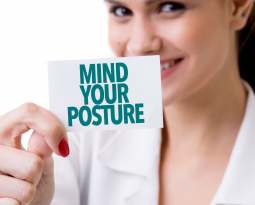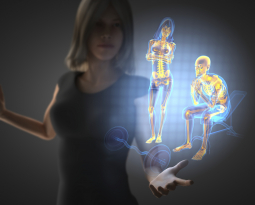
3 Research Studies Linking Posture and Carpal Tunnel
Carpal tunnel syndrome, a painful condition associated with tingling in the hand occurs when a major nerve, the median nerve, is compressed as it passes above the carpal bones in the carpal tunnel.
According to McCabe et al. (2007) carpal tunnel syndrome is associated with factors relative to demographic factors such as age, gender, pregnancy, increased body mass index (BMI) and diabetes.
Carpal tunnel syndrome is triggered by consistently sleeping in a lateral posture that subjects the wrist to increased angulation. Prolonged angulation elicits compression of the median nerve causing symptomatic presentation. Your patients will commonly say that when they wake up in the morning their arm and hand are “asleep.”
Did you know that carpal tunnel syndrome is more commonly associated with women than men. The researchers suggest this correlation is because women are more prone to insomnia than men are.
Another posture dependent activity that triggers symptoms associated with carpal tunnel syndrome is typing on a keyboard for long hours with improper wrist posture (Rempel, Keir & Bach, 2008).
A research study on employees using the keyboard for more than 20 hours per week revealed a relationship between carpal tunnel syndrome and computer use. Another study conducted on a group of participants using the keyboard for less than 20 hours in a week revealed that there is minimal risk of carpal tunnel syndrome due to decreased wrist pressure.
Researchers determined that with prolonged keyboard usage there is consistent elevation of the wrist and increased fluid pressure found in the carpal tunnel, which increases pressure of the median nerve (Rempel, Keir & Bach, 2008).
Other associated factors with carpal tunnel syndrome include fingertip force, forearm posture, finger posture, and neck posture. Improper posture among the kinetic chain can influence symptoms.
While pain associated with carpal tunnel syndrome is commonly localized around the hand, research suggests that 45% of patients with carpal tunnel syndrome experience pain in their upper extremity. Neck pain was found in 14% of patients suffering from carpal tunnel syndrome (De-La-Llave-Rincón, Fernández-De-Las-PeÑas, Palacios-CeÑa & Cleland, 2009).
Double Crush Syndrome may also occur in which the patient experiences compression of the median nerve and lower cervical vertebral nerves simultaneously. These patients commonly present with forward head posture postural distortion pattern and associated tingling down the arm to the hand.
Patients who suffer from carpal tunnel syndrome can benefit from postural correction care. Intentional postural changes can greatly impact the patient’s ability to prevent symptomatic progression and relieve stress to the median nerve.
It is recommended that when working with these patients that the healthcare professional focuses on complete posture correction including spinal alignment treatments, posture rehabilitation protocols, and patient habit re-education.
References
De-La-Llave-Rincón, A. I., Fernández-De-Las-PeÑas, C., Palacios-CeÑa, D., & Cleland, J. A. (2009). Increased forward head posture and restricted cervical range of motion in patients with carpal tunnel syndrome. journal of orthopaedic & sports physical therapy, 39(9), 658-664.
McCabe, S. J., Uebele, A. L., Pihur, V., Rosales, R. S., & Atroshi, I. (2007). Epidemiologic associations of carpal tunnel syndrome and sleep position: is there a case for causation?. Hand, 2(3), 127-134.
Rempel, D. M., Keir, P. J., & Bach, J. M. (2008). Effect of wrist posture on carpal tunnel pressure while typing. Journal of orthopaedic research: official publication of the Orthopaedic Research Society, 26(9), 1269.
















